#CodingForBeginners
Explore tagged Tumblr posts
Text
Top Free Python Courses & Tutorials Online Training | NareshIT
Top Free Python Courses & Tutorials Online Training | NareshIT
In today’s tech-driven world, Python has emerged as one of the most versatile and popular programming languages. Whether you're a beginner or an experienced developer, learning Python opens doors to exciting opportunities in web development, data science, machine learning, and much more.
At NareshIT, we understand the importance of providing quality education. That’s why we offer free Python courses and tutorials to help you kick-start or advance your programming career. With expert instructors, hands-on training, and project-based learning, our Python online training ensures that you not only grasp the fundamentals but also gain real-world coding experience.
Why Choose NareshIT for Python Training?
Comprehensive Curriculum: We cover everything from Python basics to advanced concepts such as object-oriented programming, data structures, and frameworks like Django and Flask.
Expert Instructors: Our team of experienced instructors ensures that you receive the best guidance, whether you're learning Python from scratch or brushing up on advanced topics.
Project-Based Learning: Our free tutorials are not just theoretical; they are packed with real-life projects and assignments that make learning engaging and practical.
Flexible Learning: With our online format, you can access Python tutorials and training anytime, anywhere, and learn at your own pace.
Key Features of NareshIT Python Courses
Free Python Basics Tutorials: Get started with our easy-to-follow Python tutorials designed for beginners.
Advanced Python Concepts: Dive deeper into topics like file handling, exception handling, and working with APIs.
Hands-on Practice: Learn through live coding sessions, exercises, and project work.
Certification: Upon completion of the course, earn a certificate that adds value to your resume.
Who Can Benefit from Our Python Courses?
Students looking to gain a solid foundation in programming.
Professionals aiming to switch to a career in tech or data science.
Developers wanting to enhance their Python skills and explore new opportunities.
Enthusiasts who are passionate about learning a new skill.
Start Learning Python for Free
At NareshIT, we are committed to providing accessible education for everyone. That’s why our free Python courses are available online for anyone eager to learn. Whether you want to build your first Python program or become a pro at developing Python applications, we’ve got you covered.
Ready to Dive into Python?
Sign up for our free Python tutorials today and embark on your programming journey with NareshIT. With our structured courses and expert-led training, mastering Python has never been easier. Get started now, and unlock the door to a world of opportunities!
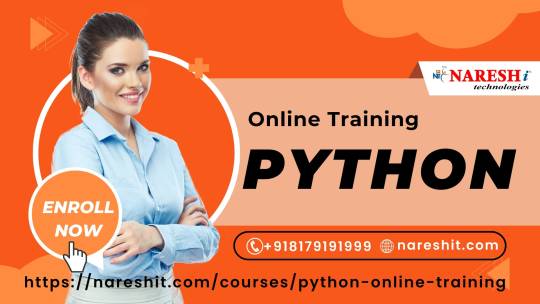
#python#pythontraining#freepythoncourse#onlinetraining#coding#pythontutorials#pythonforbeginners#programming#pythononline#learnpython#softwaretraining#freelearning#pythonprogramming#onlinetutorial#techtraining#pythoncourses#onlineeducation#pythoncode#codingforbeginners
2 notes
·
View notes
Text
Primeros Pasos en Programación: Guía Completa
Introducción
Bienvenido al mundo de la programación. Si estás aquí, probablemente estás dando tus primeros pasos en el vasto campo del desarrollo de software. Puede parecer abrumador al principio, con tantos lenguajes, herramientas y conceptos desconocidos, pero no te preocupes. Este blog está diseñado para guiarte en este viaje, ofreciéndote una introducción clara y consejos prácticos para que puedas empezar con buen pie.
1. ¿Qué es la Programación?
La programación es el proceso de crear instrucciones que una computadora puede seguir para realizar tareas específicas. Estas instrucciones se escriben en un lenguaje de programación, que es un conjunto de reglas y sintaxis que los humanos pueden usar para comunicarse con las computadoras.
Lenguajes de Programación Populares:
Python: Fácil de aprender y ampliamente utilizado en ciencia de datos, desarrollo web, automatización y más.
JavaScript: El lenguaje del web, esencial para desarrollar aplicaciones y sitios interactivos.
Java: Famoso por su uso en aplicaciones empresariales y móviles (especialmente en Android).
C++: Utilizado en desarrollo de software de sistemas, juegos, y aplicaciones de alto rendimiento.
2. Conceptos Básicos de Programación
a) Variables y Tipos de Datos
Variables: Son contenedores que almacenan valores que pueden cambiar durante la ejecución del programa.
Ejemplo en Python: x = 5 asigna el valor 5 a la variable x.
Tipos de Datos: Representan la naturaleza de los valores almacenados en las variables.
Enteros: int (números sin decimales)
Flotantes: float (números con decimales)
Cadenas: str (secuencias de caracteres)
Booleanos: bool (True o False)
b) Estructuras de Control
Condicionales: Permiten que un programa tome decisiones.
Ejemplo: if x > 0: print("x es positivo")
Bucles: Ejecutan un bloque de código repetidamente.
Ejemplo: for i in range(5): print(i) imprimirá los números del 0 al 4.
c) Funciones
Las funciones son bloques de código reutilizables que realizan una tarea específica.
Ejemplo en Python: def suma(a, b): return a + b print(suma(2, 3)) # Salida: 5
3. Elige tu Primer Lenguaje de Programación
Si eres nuevo en la programación, te recomiendo empezar con Python por las siguientes razones:
Sintaxis Simple: La sintaxis de Python es clara y fácil de entender, lo que permite concentrarte en aprender conceptos básicos de programación sin enredarte en detalles complejos.
Comunidad Amplia: Hay muchos recursos de aprendizaje disponibles, incluyendo tutoriales, foros y documentación oficial.
Versatilidad: Python se utiliza en una amplia gama de aplicaciones, desde desarrollo web hasta inteligencia artificial.
4. Herramientas Esenciales
a) Entornos de Desarrollo Integrados (IDEs)
VS Code (Recomendado): Un editor de código ligero y personalizable que soporta múltiples lenguajes.
PyCharm: Un IDE robusto para Python que ofrece herramientas avanzadas para el desarrollo y depuración.
b) Control de Versiones
Git: Una herramienta esencial para el control de versiones, que te permite rastrear cambios en tu código y colaborar con otros desarrolladores.
GitHub: Un servicio basado en la nube que facilita la colaboración y el alojamiento de proyectos.
5. Primeros Proyectos para Principiantes
Comenzar con pequeños proyectos es una excelente manera de aplicar lo que has aprendido y adquirir confianza. Aquí tienes algunas ideas de proyectos:
Calculadora Básica:
Crea una calculadora que pueda realizar operaciones básicas como suma, resta, multiplicación y división.
Juego de Adivinanza de Números:
Un programa que elige un número al azar y pide al usuario que lo adivine. Puedes agregar funciones como limitar el número de intentos y dar pistas si el número es mayor o menor.
Lista de Tareas (To-Do List):
Una aplicación simple que permite a los usuarios agregar, eliminar y marcar tareas como completadas.
6. Consejos Útiles para Principiantes
a) Practica Regularmente
La programación es una habilidad práctica. Cuanto más código escribas, mejor entenderás los conceptos.
Utiliza plataformas como LeetCode o HackerRank para resolver problemas de programación.
b) No Tengas Miedo de Cometer Errores
Cometer errores es parte del proceso de aprendizaje. Cada error que cometes es una oportunidad para aprender algo nuevo.
c) Aprende a Buscar Información
Saber cómo buscar respuestas a tus preguntas es una habilidad vital. Stack Overflow es un recurso invaluable donde puedes encontrar soluciones a problemas comunes.
d) Colabora y Comparte tu Trabajo
Participa en comunidades de desarrolladores, como GitHub o Reddit. Compartir tu trabajo y colaborar con otros te expondrá a nuevas ideas y te ayudará a mejorar.
e) Mantente Curioso
La tecnología está en constante evolución. Mantente al día con las últimas tendencias y tecnologías para seguir creciendo como desarrollador.
7. Recursos Adicionales
a) Cursos y Tutoriales
CódigoFacilito (Página web): Ofrece una amplia variedad de cursos gratuitos en español sobre programación, desarrollo web, bases de datos y más. Además, cuenta con tutoriales y una comunidad activa que apoya el aprendizaje colaborativo.
freeCodeCamp (Página web): Un excelente recurso gratuito que cubre desde conceptos básicos hasta proyectos avanzados.
Desarrolloweb.com: Un portal completo que ofrece artículos, tutoriales y guías sobre programación y desarrollo web. Es una excelente fuente para aprender HTML, CSS, JavaScript, PHP, y otros lenguajes de programación.
Píldoras Informáticas (Canal de YouTube): Explica conceptos de programación y desarrollo de software en videos cortos y fáciles de entender.
HolaMundo (Canal de YouTube): Un canal dedicado a enseñar programación en español, con cursos completos de Java, Python, C++, y más.
Fazt Code (Canal de YouTube): Ofrece tutoriales y guías sobre desarrollo web, especialmente en JavaScript, Node.js, y frameworks modernos.
b) Libros Recomendados
“Python para todos” de Raúl González Duque: Este libro es una excelente introducción a Python, diseñado para principiantes. Está escrito de manera sencilla y práctica, ideal para quienes quieren aprender a programar desde cero.
“Aprende JavaScript desde cero” de Victor Moreno: Un libro que te guía paso a paso en el aprendizaje de JavaScript. Es perfecto para principiantes que desean entender el lenguaje desde sus fundamentos y aplicar lo aprendido en proyectos reales.
“Programación en C” de Luis Joyanes Aguilar: Este es un clásico en la literatura técnica en español, ideal para quienes desean aprender el lenguaje C, uno de los más fundamentales y poderosos en la programación.
“Introducción a la programación con Python” de Jesús Conejo: Otro excelente recurso para aprender Python, este libro está enfocado en estudiantes y autodidactas que desean adquirir una base sólida en programación utilizando Python.
“El gran libro de HTML5, CSS3 y JavaScript” de Juan Diego Gauchat: Este libro cubre los fundamentos del desarrollo web moderno, incluyendo HTML5, CSS3 y JavaScript. Es una guía completa para aquellos que quieren empezar a construir sitios y aplicaciones web.
Conclusión
Adentrarse en la programación es una experiencia emocionante y gratificante. Con paciencia, práctica y los recursos adecuados, estarás bien encaminado hacia convertirte en un desarrollador competente. Recuerda que cada experto fue una vez un principiante, y lo más importante es disfrutar del proceso de aprendizaje.
#programación#aprendiendoaprogramar#principiantesenprogramación#tutorialesdeprogramación#conceptosbásicosdeprogramación#python#javascript#coding#desarrollodesoftware#programadoresprincipiantes#programacion#codinglife#desarrolladores#aprendeaprogramar#empezandoaprogramar#comienzaaprogramar#programacionprincipiantes#codingforbeginners#programadoresnovatos#tutorialesdecoding#codetutorials#aprendecoding#basicosdeprogramacion#fundamentosdeprogramacion#codingsimplificado#pythoncode#pythonprogramming#pythondev#js#javascriptcode
6 notes
·
View notes
Text
What Is The Meaning Of Programming?

In today’s digital era, understanding what is the meaning of programming is essential, as it has become one of the most valuable skills. Programming refers to the process of writing instructions that a computer can understand and execute. Whether for software development, web applications, or artificial intelligence, programming forms the foundation of modern technology. At TCCI-Tririd Computer Coaching Institute, we break down programming concepts in a simple and practical way, helping students master this essential skill.
Understanding Programming
Programming is writing instructions for computers to understand and execute. References to computer programming languages are made when showing computer programs doing specific tasks with corresponding tasks.
Why Is Programming Important?
It is the base of software development. It builds websites, mobile apps, games, and even artificial intelligence. Most of the things we use, from the social media platforms to online banking, depend on programming.
How Does Programming Work?
Programming involves code writing in different languages. Some of them:
Python - Most common for beginners also in data science.
Java - The basis for mobile apps and enterprise software.
C++ - Mostly for game development.
JavaScript - Needed for web development.
Programmers use all those programming languages to automate some processes, create software products, and solve different problems.
The Advantages of Learning Programming at TCCI
We at TCCI-Tririd Computer Coaching Institute will bring you the expertise in the varied programming languages. Learning programming with us will prepare you for an adventure to :
✔ Acquire those high-demand skills that can make a difference for a developing career.
✔ Apply the concepts of problem-solving.
✔ Get practical experience in real-world projects.
Conclusion
Programming is this kind of power that opens the floodgates of opportunities unto almost anyone. Building sites, apps, or even the simplest AI application, creating programming for it is the first step to success.
Location: Bopal & Iskon-Ambli Ahmedabad, Gujarat
Call now on +91 9825618292
Get information from: https://tccicomputercoaching.wordpress.com/
FAQs
What is the best programming language for a beginner?
Of all the simple languages for beginning students, Python is just about the easiest.
Can I learn programming without prior knowledge?
Yes! Anyone can start with introductions and good instructors.
How long does it take to learn programming?
It varies for the language and the individual willing to learn it. Basic concepts may be learned in a few months.
What are the career opportunities in programming?
Software Development, Web Development, A.I. building, Data Science, and most of all Cyber Security.
Where could I learn programming in Ahmedabad?
Join TCCI - Tririd Computer Coaching Institute and have expert training in programming!
Start Here with TCCI for Your Programming Ventures! 🚀
0 notes
Text
HTML Programming course
The HTML Programming course on MWCedu offers a comprehensive introduction to web development. Learn to create and structure web pages using HTML, focusing on elements, tags, and attributes. Gain hands-on experience with building responsive websites. Perfect for beginners seeking to start their web development journey.

1 note
·
View note
Text
3/3
Core Java: A Beginner’s Guide to Java Programming
Java has stood the test of time as one of the most widely used programming languages. From building desktop applications to powering large-scale enterprise systems, its versatility has made it indispensable. If you're just stepping into the world of programming, learning Core Java is an excellent place to start.
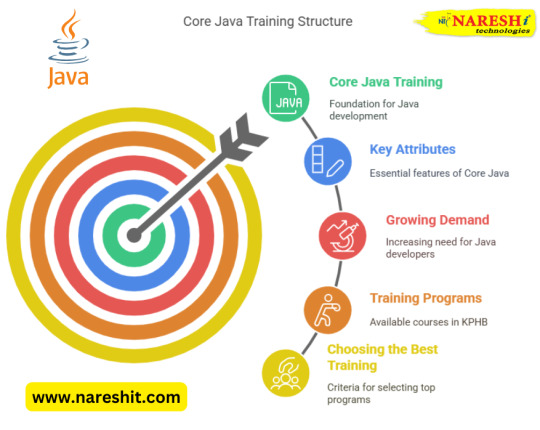
What is Core Java?
Core Java refers to the fundamental aspects of Java programming, forming the backbone of the language. It encompasses essential concepts such as object-oriented programming (OOP), memory management, exception handling, and multi-threading. Unlike Advanced Java, which includes frameworks like Spring and Hibernate, Core Java focuses on the basic building blocks needed to write efficient and scalable applications.
Why Learn Core Java?
Before diving into web or enterprise development, mastering Core Java equips you with:
A solid foundation in OOP principles – Essential for writing clean, reusable, and modular code.
Platform independence – Java’s “Write Once, Run Anywhere” philosophy allows applications to run on multiple platforms without modification.
Memory management – Java handles memory allocation and garbage collection efficiently.
Robust exception handling – Prevents unexpected crashes and improves software reliability.
Multi-threading capabilities – Enables efficient execution of concurrent tasks.
Setting Up Java
To start coding in Java, follow these simple steps:
Install Java Development Kit (JDK) – Download the latest version from Oracle’s official website.
Set up an Integrated Development Environment (IDE) – Popular choices include:
IntelliJ IDEA – A feature-rich, user-friendly IDE.
Eclipse – A powerful, open-source Java IDE.
NetBeans – Great for beginners due to its built-in tools.
Verify the installation by running: shCopyEditjava -version This command confirms that Java is installed and accessible.
Understanding the Basics of Java
1. Hello World Program
The classic first step in any language is printing "Hello, World!" to the console:
java
CopyEdit
public class HelloWorld { public static void main(String[] args) { System.out.println("Hello, World!"); } }
public class HelloWorld – Defines a class named HelloWorld.
public static void main(String[] args) – The entry point of any Java program.
System.out.println() – Prints text to the console.
2. Variables and Data Types
Java has various data types:
java
CopyEdit
int age = 25; double price = 99.99; char letter = 'A'; boolean isJavaFun = true; String message = "Java is awesome!";
Each type serves a distinct purpose, from storing numbers to handling text.
3. Control Flow Statements
Decisions and loops are integral to programming:
java
CopyEdit
if (age > 18) { System.out.println("You are an adult."); } else { System.out.println("You are a minor."); }
Loops enable repeated execution:
java
CopyEdit
for (int i = 0; i < 5; i++) { System.out.println("Iteration: " + i); }
4. Object-Oriented Programming (OOP)
Java follows OOP principles, including:
Encapsulation – Data hiding through private fields and public methods.
Inheritance – Reusing code through parent-child class relationships.
Polymorphism – Methods behaving differently based on input.
Abstraction – Hiding implementation details and exposing only necessary functionality.
Example:
java
CopyEdit
class Animal { void makeSound() { System.out.println("Animal makes a sound"); } } class Dog extends Animal { void makeSound() { System.out.println("Dog barks"); } } public class Test { public static void main(String[] args) { Animal myDog = new Dog(); myDog.makeSound(); // Output: Dog barks } }
Next Steps in Java Learning
Once you've grasped Core Java, you can explore:
Collections Framework – Handling groups of objects efficiently.
Multi-threading – Running tasks in parallel for improved performance.
File Handling – Reading and writing files.
JDBC – Connecting Java applications to databases.
Final Thoughts
Java continues to be a powerhouse in software development, with Core Java serving as the gateway to mastering the language. Whether you're aiming to build Android apps, enterprise solutions, or cloud-based systems, a strong grasp of Core Java will set you on the path to success.
Feedback Time!
What would you like to improve in this article? A) Add more beginner-friendly examples B) Include more advanced topics C) Simplify explanations D) Provide additional resources for learning Java E) It’s perfect as is!
Comment Below
#Java#CoreJava#JavaProgramming#CodingForBeginners#LearnToCode#Programming#Tech#SoftwareDevelopment#OOP#CodeNewbie#TechEducation#JavaDeveloper#ProgrammingBasics#CodingTips#DeveloperLife
0 notes
Text

#ProgrammingCoursesAfter12th#LearnCoding#TechCareer#WebDevelopment#AppDevelopment#PythonProgramming#DigitalMarketingWithCoding#CodeWithTLS#CodingForBeginners#CareerAfter12th#TechEducation#FutureInTech#NonScienceProgramming#StudentLife#SkillDevelopment
0 notes
Text
HTML Assignments for Beginners
We completed over a thousand HTML Assignment for Students. We offer digital html table assignment, html5 assignments for beginners.
https://www.udaipurwebdesigner.com/html-assignments-for-beginners/
#UdaipurWebDesigner#LearnHTML#HTMLBeginner#CodingForBeginners#WebDevJourney#PracticeHTML#HTMLChallenges#BuildingWebsites#FirstLineOfCode#HTMLFundamentals#LearnByDoingHTML
0 notes
Text
App Development course Good for kids?

Yes! An app development course is a great way for kids to learn important skills like creativity, problem-solving, and logical thinking. It helps them understand how apps work and lets them create their own.
Learning to build apps can be fun and exciting. Kids can make their own games, learning tools, or useful apps. This also improves their math and thinking skills while encouraging teamwork and innovation.
With simple coding platforms, kids can start learning step by step. They don’t just play games—they learn how to create them! Starting early can help them get ready for a future full of technology and new ideas.
Want your child to learn app development? Let them explore coding in a fun and easy way! - https://goglobalways.com/book-free-class/
Learn More - https://goglobalways.com/blog/learn-app-development-courses-for-kids/
#HTMLforKids#KidsCoding#LearnHTML#CodingForBeginners#WebDevelopment#KidsCanCode#FutureSkills#STEMLearning#CodeYourFuture
0 notes
Text
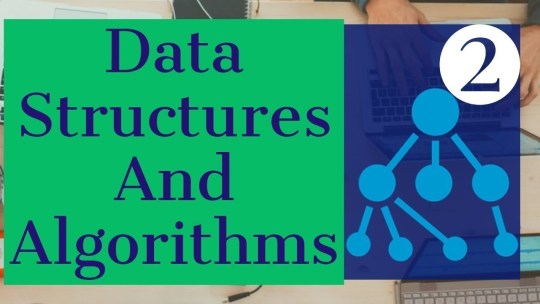
Mastering Data Structures and Algorithms in Python Course
Master Data Structures and Algorithms in Python with High Technologies Solutions
In today’s competitive tech landscape, mastering Data Structures and Algorithms (DSA) in Python is crucial for anyone aiming to excel in software development, competitive programming, or technical interviews. High Technologies Solutions offers a comprehensive Data Structures and Algorithms in Python course, designed to equip you with industry-relevant skills and hands-on experience.
Why Learn Data Structures and Algorithms in Python?
Efficient Problem-Solving—DSA helps you write optimized, high-performance code.
Crack Coding Interviews—Major tech giants like Google, Amazon, and Microsoft prioritize DSA proficiency in hiring.
Enhance Career Growth—Strong DSA knowledge opens doors to top-paying job opportunities.
Competitive Programming—Participate in coding challenges and hackathons with confidence.
What You’ll Learn in Our Course
At High Technologies Solutions, our course is structured to provide deep insights and practical exposure to Python-based DSA concepts:
Introduction to Data Structures & Algorithms
Arrays, Linked Lists, Stacks, and Queues
Trees and Graphs
Sorting and Searching Algorithms
Dynamic Programming & Recursion
Hands-on Projects & Real-World Implementations
Why Choose High Technologies Solutions?
Expert Instructors with years of industry experience
Live Projects & Case Studies to enhance practical learning
Flexible Learning Options—Online and classroom training available
Placement Assistance to help you land top-tier job opportunities
Enroll Today and Boost Your Tech Career!
Don’t miss this opportunity to become a proficient Python developer with in-depth DSA knowledge. Enroll now in our Data Structures and Algorithms in Python Course at High Technologies Solutions and take your career to new heights.
0 notes
Text
Which Type of Full-Stack Developer is Best for Beginners?
Do you want to work as a full-stack developer but aren’t sure which route to take? It can be difficult to choose the best full-stack developer profession because there are so many options and technologies accessible, especially for newcomers. read more

#FullStackDevelopment#BeginnerDeveloper#LearnToCode#WebDevelopment#CodingForBeginners#DeveloperJourney#TechCareers#FullStackTips#ProgrammingForBeginners#WebDev
0 notes
Text
Tutorial 1.
Input:
What should the title of the notebook be? Give a short description about it, as well as a table of contents, if you can, and generate the necessary hashtags, and make sure you spell Reescoin, R-E-E-S-C-O-I-N, and Rees, R-E-E-S. Thank you.
Title:
Getting Started with Python: Your First Script
---
Short Description:
This beginner-friendly tutorial introduces you to Python programming using Google Colab. Learn how to write and execute your first script, understand variables, perform basic operations, and explore essential programming concepts. Perfect for anyone taking their first step into coding or setting the foundation for advanced projects like REESCOIN development.
---
Table of Contents:
1. Introduction
What is Google Colab?
How to use this tutorial.
2. Step 1: Writing Your First Python Script
Using the print() function.
3. Step 2: Variables and Basic Operations
Defining variables.
Performing math operations.
4. Step 3: Experimenting with the Code
Modifying variables and observing changes.
5. Glossary and Explanations
Understanding key Python terms and syntax.
Tips for beginner coders.
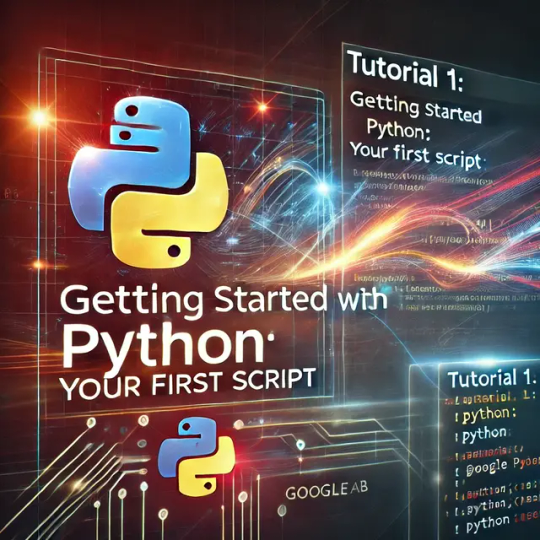
#GoogleColabTutorial#PythonProgramming#LearnPython#CodingForBeginners#REESProjects#REESCOINDevelopment#BlockchainCoding#TechEducation#OpenSourceCoding#ProgrammingBasics#CodingCommunity
0 notes
Text
Part 1 : Learn Key String-Array Conversion!
youtube
Learn Key String - Array Conversion
Javascript Interview Question #1
Looking to ace your JavaScript interview?
📑This video on youtube.com@sensationsolutions covers one of the most common yet tricky topics: String and Array conversions Understand how it works, practical examples, and common interview scenarios to ace your coding rounds with confidence.
💡 What you’ll learn:
✔️ Real-world use cases in coding interviews
✔️ Tricks to explain it like a pro 👉 Ready to crack your JavaScript interview?
📥 Subscribe to our channel for daily JavaScript Shorts that simplify complex topics!
📺 Watch our complete Interview Questions Shorts Playlist to cover more essential concepts: https://www.youtube.com/playlist?list=PL6a5cVtbW_6dJNHg70YEXz0AqdDEkADmB
🔔 Hit the bell icon to stay updated with new videos every day!
#javascript#progra#programming#job interview#education#coding#code#shorts#watch#codingforbeginners#learnlanguages#interviewpreparation#Youtube
0 notes
Text
Python for Data Science: Best Training at TCCI Ahmedabad!

Introduction
Data has become the new gold in this digital age. Companies worldwide rely on data science to make smarter business decisions, enhance customer experiences, and boost profits. Python for Data Science Best Training at TCCI Ahmedabad equips learners with the right tools to harness the power of data. At TCCI-Tririd Computer Coaching Institute, we offer the best Python training for Data Science, helping students and professionals gain essential skills for data-driven success.
Why Python for Data Science?
1. Simplicity and Readability
Python is easy to learn and use since it has a very simple syntax.
2. Extensive Libraries and Frameworks
Python is equipped with powerful libraries such as NumPy, Pandas, Matplotlib, and Scikit-learn, all of which ease manipulation and analysis of data.
3. Supportive Community and Scalability
Python has very wide acceptance in the industry, and an active community supports and maintains it.
Important Libraries in Python for Data Science
1. NumPy
Used for numerical operations on large multi-dimensional arrays and matrices.
2. Pandas
For data manipulation and analysis.
3. Matplotlib and Seaborn
For data visualization using graphs and charts.
4. Scikit-learn
For machine learning and predictive modeling.
Applications of Python in Data Science
A plethora of activities fall under data analysis, cleaning, filtering, and processing large datasets.
Machine learning is the predictive modeling area using Python.
Data visualization creates meaningful insights from charts and graphs.
Big data processing is able to process vast amounts of structured and unstructured data.
Why Learn Data Science at TCCI-Ahmedabad?
1. Certified Trainers
They are trained and certified including with years of industrial experience in Data Science and Python programming.
2. Practical Training Approach
They believe in more hands-on experience, working with real datasets and projects.
3. Industry-Oriented Curriculum
The syllabus has been designed according to the power needs of modern data-driven industries.
4. Flexible options to Learn:
They conduct both live online and classroom classes for your comfort and availability.
Course Structure at TCCI
1. Basics of Python Programming
Python syntax and fundamentals
Data types, loops, and functions
2. Data Manipulation with Pandas
Data cleaning, filtering, and processing
Handling missing data
3. Data Visualization Techniques
Creating graphs and charts using Matplotlib
Advanced visualizations with Seaborn
4. Machine Learning Fundamentals
Supervised and unsupervised learning
Building predictive models
Hands-On Training and Real-World Projects
This is how we will have our live projects and case studies that will ensure that students had first-hand experience of the world.
Who can Join?
Students or fresh graduates who want to start their careers in data science.
Working professionals who want to switch into a data-related role.
Business Analyst who wants to enrich existing knowledge by indulging into synergies of at least some of them.
For anyone interested in learning python for data science.
Benefits of learning python at TCCI
It has personalized coaching with expert mentors.
Cheap fees with world-class training.
A certificate awarding on successful completion.
Career Opportunities in Data Science
Data Analyst
Machine Learning Engineer
Business Intelligence Analyst
AI and Deep Learning Specialist
Success Stories of TCCI Students
Several students have been successfully placed at well-paying, high-end companies.
How to get registered in the Python for Data Science Course at TCCI?
Visit us at TCCI-Tririd Computer Coaching Institute, Ahmedabad, or book a free demo class on our website today!
Location: Bopal & Iskon-Ambli Ahmedabad, Gujarat
Call now on +91 9825618292
Get information from: tccicomputercoaching.wordpress.com
FAQs.
1. Do I need to have basic coding skills or some sort of idea about coding before enrolling for the course?
Apparently NOT, this one is the beginner-friendly course and going to cover all the basics.
2. Has the course duration been defined yet?
This might change, depending on the time taken for each student to learn, but generally on an average, it should be between 3-6 months.
3. Am I going to get certificate at the end of the course?
Yes! You will be getting a TCCI certified completion certificate.
4. Is it possible to have online classes?
Yes, we provide online and offline training.
5. What are the career lines after completing the program?
You can apply for positions as a Data Analyst, Data Scientist, or Machine Learning Engineer.
0 notes
Text
PYTHON PROGRAMMING COURSE
The Python Programming Course on MWCedu is designed to introduce learners to the fundamentals of Python. It covers key concepts like data types, control structures, and object-oriented programming. Through interactive lessons and practical projects, students will gain hands-on experience. Ideal for beginners and those looking to enhance their coding skills, this course offers a flexible learning experience online.

1 note
·
View note
Text
Java vs Python – Which programming language is good?
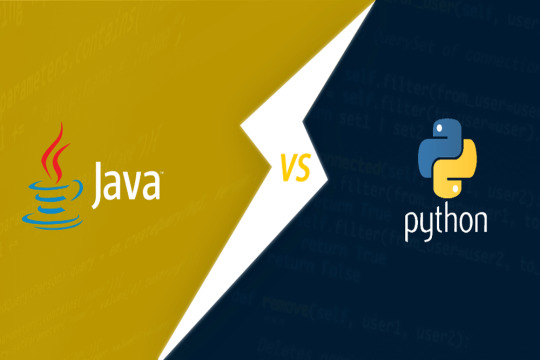
For a few decades now, Java vs Python both have been around and so has the debate of which is better. We are all entitled to our opinions and I am here to help you make your decisions by pointing out the pros and cons of both the languages.
Similar to many other programming languages these are commonly used to create basic applications or customised software products.
Let us take a side by side comparison of both the languages.
The all-rounder
Java, although takes a little more effort to learn, runs on any OS platform without any indifference. Java is popularly known as WORA (Write Once Run Anywhere). However, both Java and Python do compile as bytecode. The main difference is that Java is a compiling language whereas Python is an interpreted language that executes codes by line.
Its all in the CODE!
Beginners have always found Python as a smoother teacher. It appears as an intuitive coding style that has simpler syntaxes in comparison to Java.
Python uses whitespaces to mark the beginning and end of the blocks of code. Java, however, uses braces for the same purpose.
Python comparatively uses few lines of code as it does not include braces, and uses white space to mark the start & closings of a module.
The deal with Variables.
Java does not allow the data type of a variable to be changed, while Python does. Unlike traditional programming languages, Python allows you to assign a string to a variable that once held an integer value. This is not possible with the statically typed language Java, where you have to declare the variable names and their type in an explicit manner. On the contrary, Python is looked upon as a dynamically typed language that doesn’t stress this.
Unlike the traditional programming languages, Python lets you assign the new value to a variable that previously stored a different value. This is not possible with Java, and you need to define a variable for each corresponding type.
On the other hand, Python is simpler & more forgiving than Java even in simpler cases as such reusing old variables.
The Flash Test — Speed & Portability
JComparing both languages, their speed and performance varies. Java is notably faster than Python. However, it cannot handle CPU intensive tasks, as it executes an entire class and not by lines. But with the choices at their disposal, they can replace Python’s runtime with CPython, PyPy, Cython. Java does not need additional tools for optimisation.
Python has tons of modules and a quick learning progress that allows you to manipulate it so that it could do almost anything for you added it being an open source language.
In terms of Java, being platform independent it lets you run your code on any machine that supports JVM. And because of its popularity, the JVM is already installed in most systems.
Make a choice !
Albeit, novices choose Python as you can see what the outcome will be immediately. Professionals prefer Java as it is used for complex applications and software development invariably across platforms.
If you are interested in becoming a developer or an architect or data science engineer then Java fits you. In case you are interested in the role of modern developers and fields such as Robotics and AI then you should master Python.
In conclusion we are telling you, do not limit yourself to one language.
#JavaVsPython#ProgrammingLanguages#CodingComparison#JavaProgramming#PythonProgramming#LearnToCode#CodingForBeginners#DynamicTyping#StaticTyping#ProgrammingSpeed#DeveloperLife#DataScience#SoftwareDevelopment#AI#Robotics#OpenSource#JavaVsPythonDebate#TechLearning#CodeEfficiency#CodingTips
0 notes